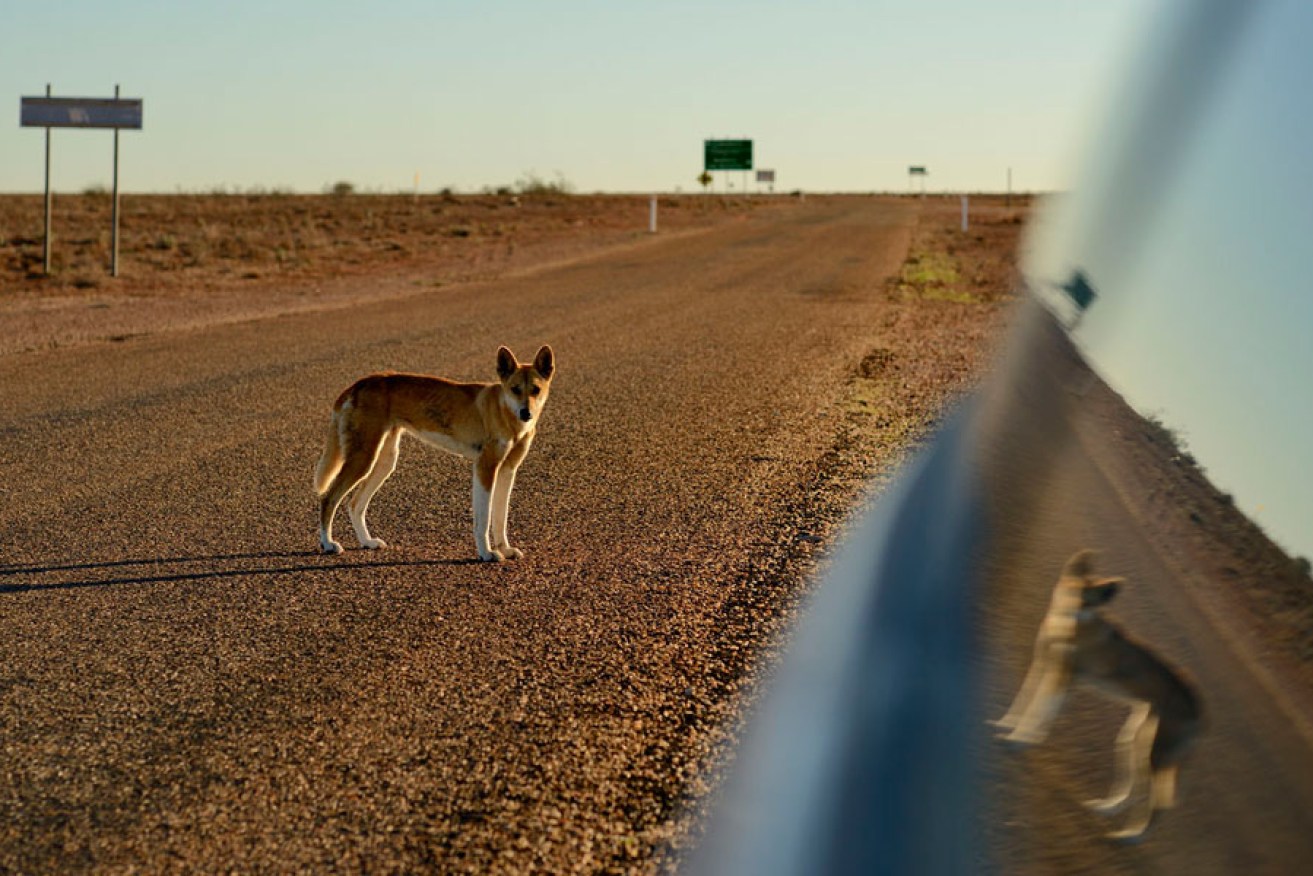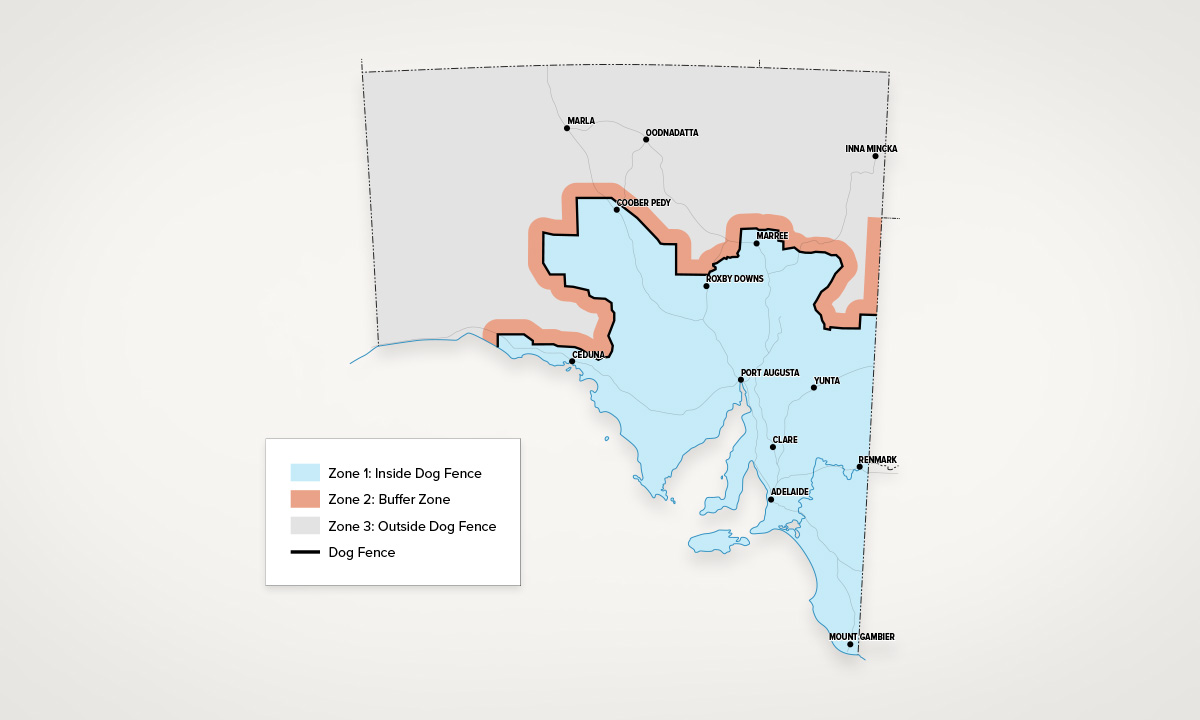Strategy outlines ‘once in a generation’ chance to eliminate SA wild dog threat
Farmer Nathan Redpath recalls moving 2000 pregnant ewes into a northern Flinders Ranges paddock and within eight months losing 500 of them to wild dogs and dingoes. No lambs survived.


Wild dogs and dingoes are being targeted in a new strategy to clear them out of SA land south of the Dog Fence.
Not only did Redpath lose valuable breeding stock but he also faced the grim task of mopping up the destruction of his flock at Mt Freeling, having to euthanise many of the severely mauled animals.
It is a grisly scenario that the state’s Primary Industries Minister Clare Scriven believes will soon be eliminated in South Australia.
Scriven released the new SA Wild Dog Management Strategy 2023-2033 earlier this month, saying it “prioritises work to achieve a once-in-a-generation opportunity to eradicate wild dogs from inside the Dog Fence”.
The new strategy refers to animals that include dingoes and mixed breed dingoes as “wild dogs” inside the dog fence stretching across the north of the state, but dingoes outside of the fence.
“The eradication of wild dogs inside the Dog Fence is a priority for the State Government because they threaten the sheep industry, which employs 15,000 South Australians and has a value chain worth $1.3 billion annually,” Scriven said.
Significant work has already been invested in controls since 2018. It was then that landowners across the state reported one of their worst years, as wild dogs entered prime sheep country south of the 2150km barrier that had been degraded by the impacts of camels, horses, kangaroos, emus, wombats, wind, fires and floods.

In 2018 alone it was estimated that 20,000 sheep were killed by wild dogs inside the South Australian section of the fence, threatening the industry and triggering a cross-border effort to repel their advance.
The state and federal governments, along with the livestock industry, pulled together a $26.6 million commitment to rebuild 1600 kilometres of the dilapidated fence, erected to protect grazing sheep from dingoes coming from the north in 1947.
An intensive aerial baiting and professional trapping program working alongside the rebuild has led to Scriven to declare that SA is on the cusp of eradicating wild dogs south of the fence altogether.
Since 2018, more than 780 wild dogs have been removed through trapping.
Scriven also said that by July this year, over half the Dog Fence Rebuild Project was completed and as wild dog numbers fell “producers had restocked over 800,000 hectares with sheep”.
Another two cattle properties covering 500,000 hectares had indicated they were working towards restocking with sheep.

Photo: Fencit, Australian fencing industry national group
The strategy report said the management program was important to protect livestock but also to prevent attacks on native animals, and to stop wild dogs from spreading disease and threatening people “particularly in and around mine sites and tourist camping areas”.
Scriven said that dingoes living outside the fence and its 35km buffer “will continue to be valued for their important roles” ecologically and culturally.
“In that vast area, dingoes are only controlled when they threaten the cattle industry or human safety,” she said in the strategy report.
The new strategy focuses on the actions and activities needed to ensure the wild dog population inside the fence remains under control, outlining a continued program to use trappers, baiting, rules preventing people from keeping dingoes or their hybrids as pets, and maintaining the dog fence into the future.
Sheep grazier and Livestock SA president Joe Keynes said the strategy was critical to support SA producers and it was achievable to eradicate wild dogs south of the fence, a move that would reap positive results for farmers in safeguarding their businesses.
“Dingo and wild dog attacks have far-reaching consequences, not only affecting the animals but also the mental and economic well-being of the producers focused on protecting the health and welfare of their animals,” he said.
“We understand that in 2018, SA producers lost about 20,000 sheep to wild dog attacks, which led to the development of new control programs and this new strategy to mitigate the impacts of dog attacks.”
“Just last week, we received reports that two producers north of the Ngarkat Conservation Park (on the border adjacent to Victoria’s Big Desert Wilderness Area) lost more than 30 sheep in two days due to dingo attacks, and unfortunately these are not isolated incidents.”
[solstice_jwplayer mediaid=”pPpYg7Uy” playerid=”Meorb6nj” caption=”Sponsored video – The Post” /]




